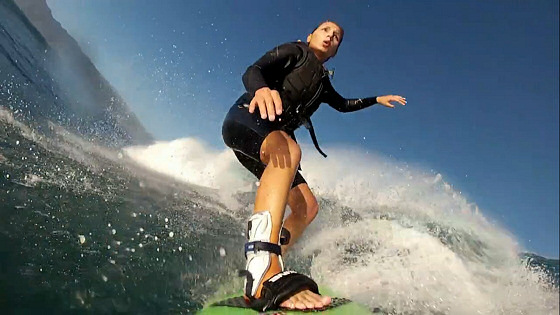Maya Gabeira has returned to the big wave surfing arena, nearly three months after the dangerous wipeout suffered at Nazaré, Portugal.
The fearless Brazilian rider, 26, has had her first tow-in session of the year 2014, in Hawaii. Gabeira returned to the giant waves with Carlos Burle in the jet ski seat.
In October 2013, she broke her ankle in an horrendous wipeout, after getting hit by a massive 60-foot white water wall. Maya spent the last 90 days recovering from the accident, in multiple physical therapy sessions.
She's not fully recovered, but she couldn't miss this opportunity. The intrepid surfer from Rio de Janeiro deals with an asthma problem, and has already broken her nose ten times. But she's not holding back. Her first big wave since the Nazaré wipeout is a complete success.
"It was great. We never forget some things. It hurts in the take-off, and I still feel that the body wants to protect the ankle during wave bumps", Gabeira reveals in the morning after the comeback.
After a second big wave session in the 20-foot range, Maya opens her smile. "I am very happy to be back to what I love. I feel 80% ready. I still need to strengthen muscles and spend more time in the water".
Carlos Burle, her longtime trainer and friend, believes she is almost ready to challenge the biggest waves on Earth.
"Maya is super fine. She is not ready for a giant wave. She has to go slowly, but she's been training harder. The physical side doesn't worry me. Now, she must believe in herself", concludes Burle.
